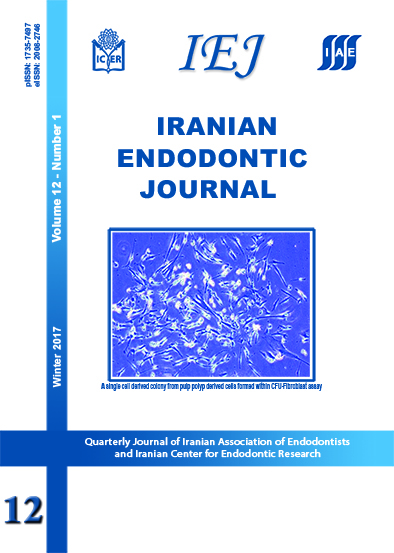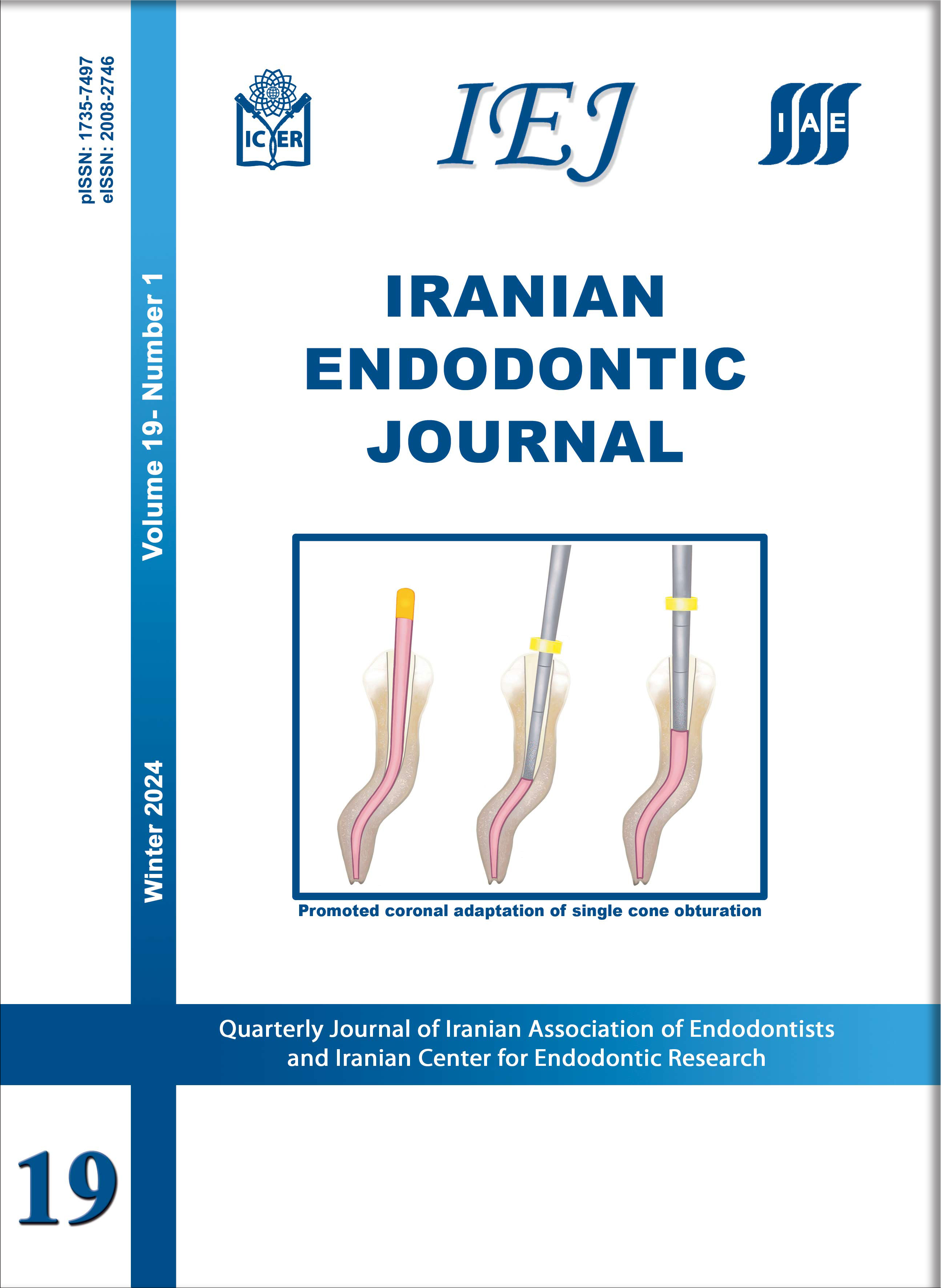A Review on Root Anatomy and Canal Configuration of the Maxillary Second Molars
Iranian Endodontic Journal,
Vol. 12 No. 1 (2017),
31 December 2016,
Page 1-9
https://doi.org/10.22037/iej.v12i1.10861
Introduction: The complexity of the root canal system presents a challenge for the practitioner. This systematic review evaluated the papers published in the field of root canal anatomy and configuration of the root canal system in permanent maxillary second molars. Methods and Materials: All articles related to the root morphology and root canal anatomy of the permanent maxillary second molars were collected by suitable keywords from PubMed database. The exhaustive search included all publications from 1981 to December 2015. The articles relevant to the study were evaluated and data was extracted. The author/year of publication, country, number of the evaluated teeth, type of study (method of the evaluation), number of roots and the canals, type of canals and the morphology of the apical foramen was noted. Results: The highest studied populations were in Brazil and United States. A total of 116 related papers were found, which had investigated 11945 teeth in total. Across all the studied populations, the three-rooted anatomy was most common, while the four-rooted anatomy had the lowest prevalence. The presence of the second mesiobuccal canal ranged from 11.53 % to 93.7%, where type II (2-1) configuration was the predominant type in Brazil and USA and types II and III (1-2-1) in Chinese populations. In 8.8-44% of cases, fusion was observed. The main reported cases were related to palatal root. The major method of anatomical investigation in case reports was periapical radiography, and the chief method in morphological studies was CBCT. Conclusion: The clinicians should be aware of normal morphology and anatomic variations to reduce the treatment failure.
Keywords: Maxillary Second Molar; Root Canal Anatomy; Root Morphology; Systematic Review




